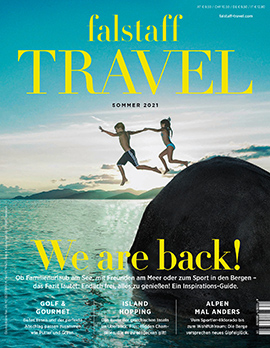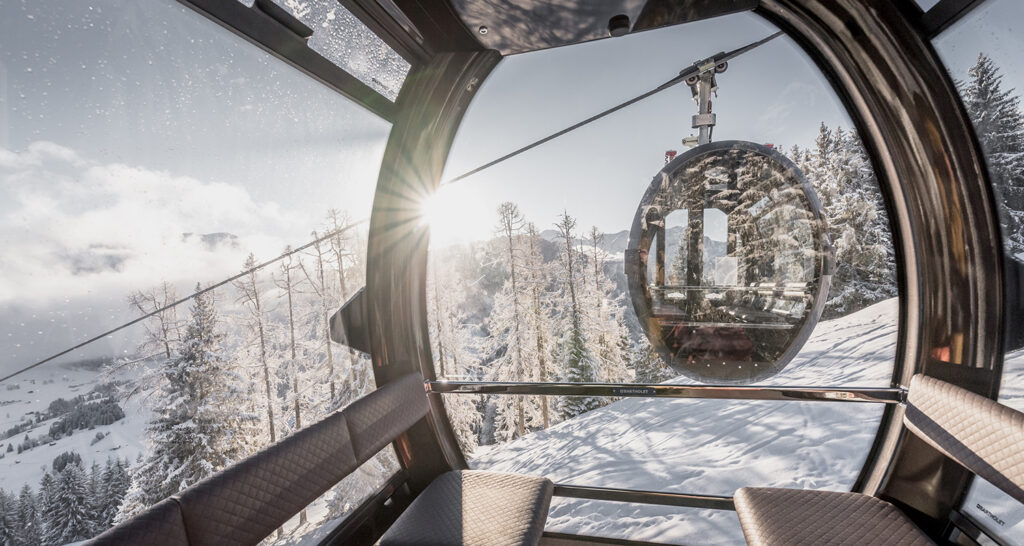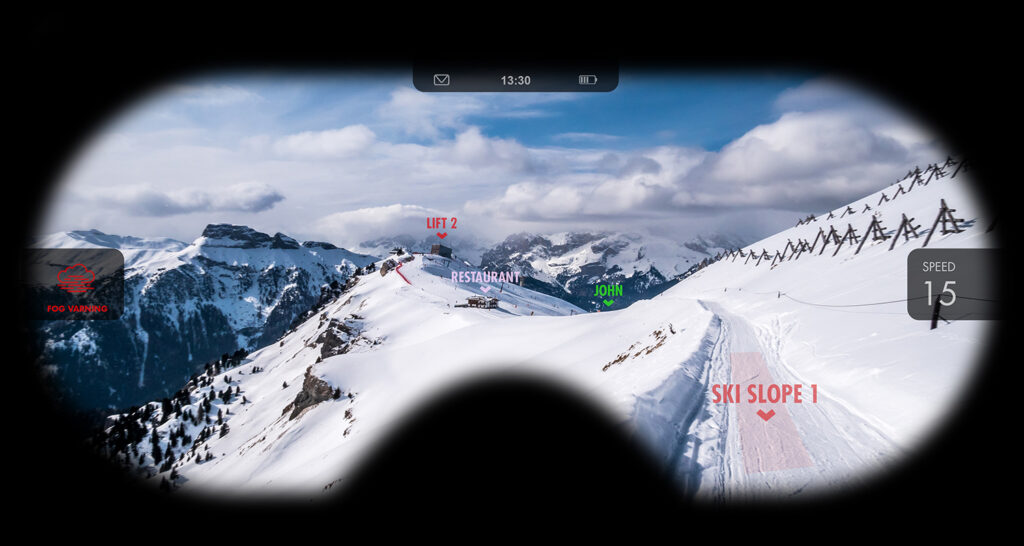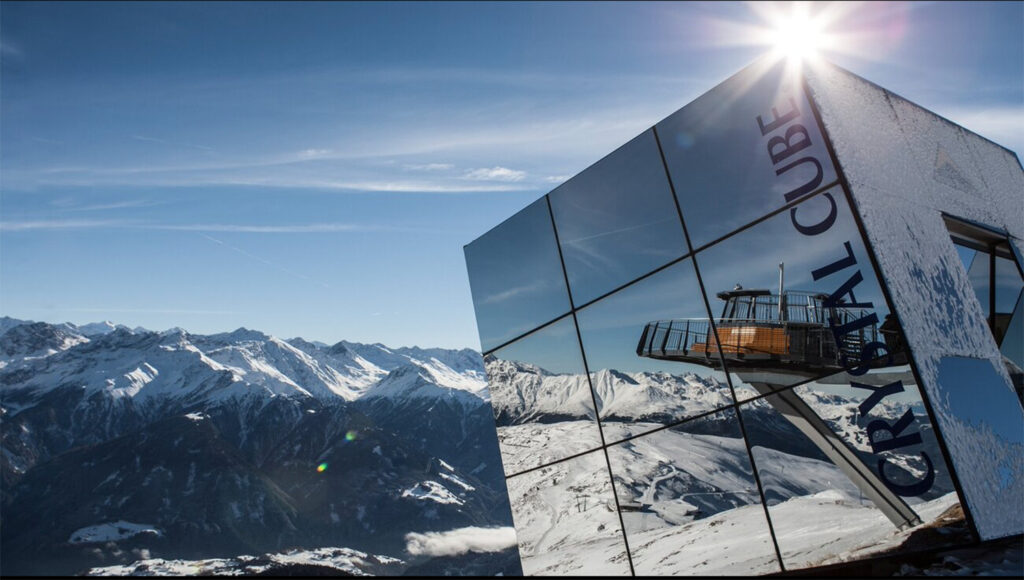
The snow of tomorrow
Self-driving gondola taxis, apps that inform you about the length of the queues in front of the lifts and climate protection projects that aim to delay the melting of the glaciers - the future of winter sports is digital, the changes are drastic.
17 December 2021
As if four flying saucers had landed on oversized balancing poles and spat out a row of skiers at the bottom: this is how people in Lahojsk, Belarus, imagine the all-year ski resort of tomorrow. In the principality of Andorra in the Pyrenees, the ski slope - a snow-covered hill offering 360 degree views of the shops below - also resembles the backdrop from a science fiction film. At least that's what visionary designers have in mind: lots of glass, lots of light, lots of round surfaces - but less and less snow. Climate experts and trend researchers agree that our grandchildren and great-grandchildren will take their first turns either indoors or at altitudes of over 1,500 meters.
Innovations in the ski regions
The tourist destination of Flims Laax Falera, known for its pioneering role (online bookings have been made here since the 1990s), is also aware of this fact. Most recently, the Swiss made a name for themselves with the introduction of the "Last Day Pass" as a climate protection project: The symbolic ski pass is a wooden keycard that guests can buy for around 75 euros. On the card, April 5, 2056 is set as the last day on which one will be able to ski on the Swiss pre-glacier. Proceeds from the sale will fund a carbon offset, allowing the date to be pushed back. "Due to global warming, the snow line will continue to migrate upwards. With the Last Day Pass we sensitize our guests to this, even if we can't stop climate change by doing so, of course," explains press spokeswoman Martina Calonder. Other winter sports regions also address climate aspects and advertise alternatives to skiing, such as cross-country skiing, sledding or winter hiking. On the Mieminger Plateau in Tyrol, all lifts were dismantled years ago; here "gentle winter tourism" was decided upon. Ischgl, on the other hand, sees itself as the "largest climate-neutral skiing area": the carbon dioxide emissions of the mountain railways are offset by a reforestation program, and the electricity comes from renewable energies.
©Melanie Uhkötter
Asked whether winter sports will be reinvented in the near future, Prof. Peter Zellmann, head of the Institute for Leisure and Tourism Research in Vienna, answers: "Skiing is currently irreplaceable for 80 percent of winter guests. This will not be any different in ten years' time. However, other winter sports activities are increasingly being found on offer - not to replace skiing, but only to complement it." On the sports equipment side, Zellmann doesn't see any groundbreaking inventions coming our way either: "The carving ski with its low height and strong waist makes it easy for newcomers to learn to ski - this development was certainly the pinnacle of all technical innovations in this area."
Virtual reality - Capture your own descent with the camera or check your speed: You'll soon be able to do this with augmented reality ski goggles from Ride On. ©iStock/Adam Höglund
The hotel room as cyberspace
But how realistic are future scenarios where we look into an intelligent mirror in our hotel room while on skiing vacation, which will order our equipment to the ski cellar, find the bus connection to the next cable car and reserve the lift tickets? Expert Zellmann says: "In the area of digitalization, there will be constant improvements, but no revolutionary changes." Digitalization will also not replace people in the service sector, but merely frees them up for other tasks and gives employees more time for the guests. Speaking of digitalization: the "Inside Laax" app in Flims Laax Falera won numerous awards. With the app, you can see which ski lift has the fewest people queuing or how to get to the via ferrata the fastest. Guests can reserve services such as a parking space or a table in the mountain restaurant with the click of a button. Flims Laax Falera is currently working on the next big thing: the new mountain railway will be the world premiere of so-called e-ropetaxis. This will make it possible for skiers to select their desired destination as soon as they start their ride, which the gondola will then automatically navigate to. This superlative project is scheduled for completion by 2023 - a technology that will represent an absolute novelty in the ropeway industry.
©Triol Advertising/Photo Müller
What's Next?
How will the pandemic affect the coming winter season? What changes will tourism experience as a result of Covid-19? And what are the long-term societal impacts? A forecast:
Concrete measures Winter 2021/22
As of the editorial deadline (November 2021), in Austria, in cable cars, gastronomy and accommodation, as well as at Advent markets and gatherings of 25 people or more, such as après-ski, proof of 2G is required in accordance with the "vaccinated or recovered" principle, as well as the wearing of an FFP2 mask. In Italy, all winter sports enthusiasts over the age of 12 must provide proof of compliance with the 3G rule in the form of the EU digital Covid certificate ("green passport"). Passengers must wear a mask from the age of six. On entry, 3G proof is required from the age of six. In Switzerland, masks are compulsory in all closed mountain railways, cable cars, chairlifts and ski lifts, and in closed station buildings, waiting areas and lift ticket sales points. A 3G certificate is currently only required for people over the age of 16 who want to be in indoor areas of the catering industry.
Change journey culture until 2030
"In the post-Corona era, regional tourism will initially gain popularity. Short distances and local recreation convey a sense of security - just as familiar cultural circles promise emotional security," writes Anja Kirig of the Zukunftsinstitut. And she continues: "The new travel culture according after Corona will change mass tourism in particular, and in some cases even destroy it. Travel destinations will be chosen more consciously and mindfully."
Social trends until 2050
"The measures for the corona pandemic have reinforced a development that was already underway - for example, that the importance of time for oneself and the family is increasing," says Peter Zellmann, head of the Institute for Leisure and Tourism Research in Vienna. "Aspects such as environmental protection and closeness to nature have been important to about 20 percent of guests up to now; in 25 years they will probably be decisive for up to 80 percent - also when choosing a holiday destination. Resource and environmental awareness will increase, but slowly and not overnight."
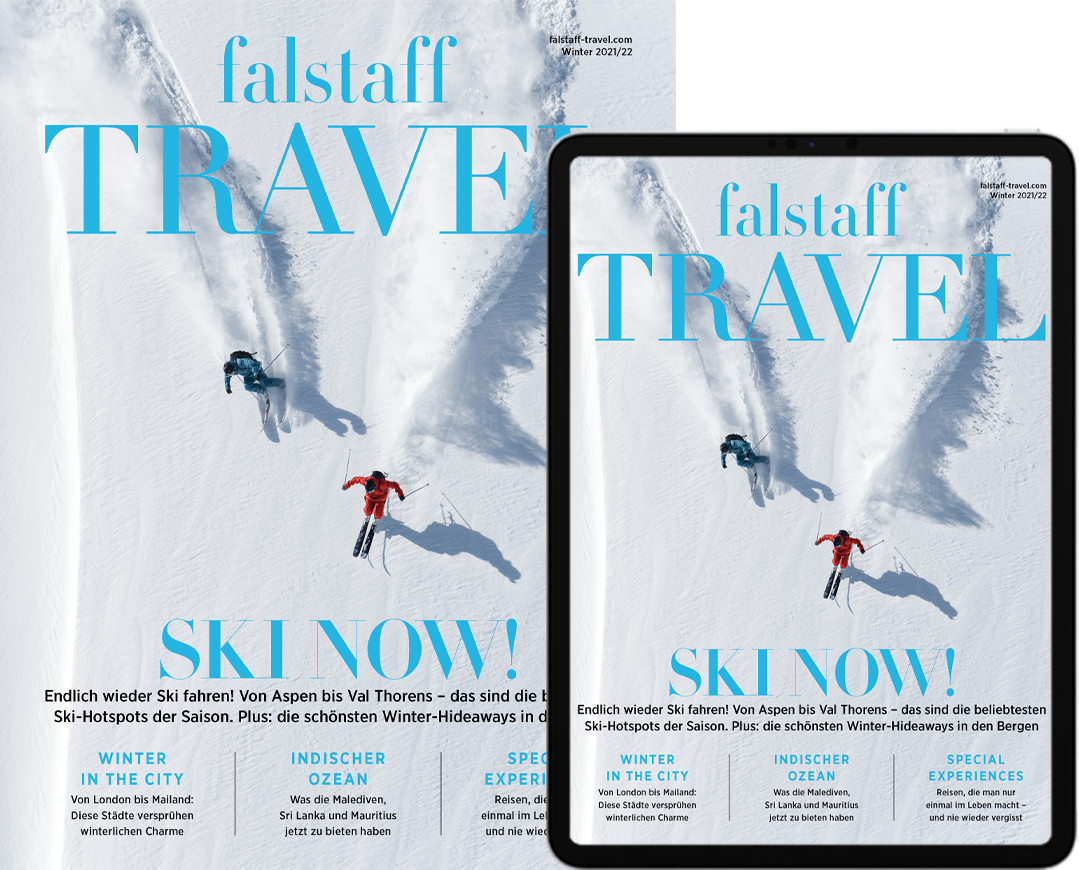
This article appeared in the Falstaff TRAVEL issue Winter 2021/22.
